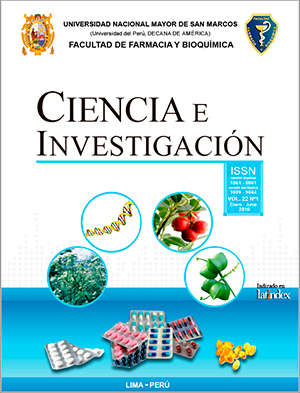The physiological saline solution and its high concentration of chloride
DOI:
https://doi.org/10.15381/ci.v22i1.16812Keywords:
Crystalloid, pH, acidosis, dilutional, hyperchloremiaAbstract
Introduction. 0.9% Sodium Chloride (Physiological Saline Solution?) Is the unbalanced crystalloid widely used in our country. It is isotonic but its composition is far from being physiological for the human organism. The chloride ion is the most abundant electrolyte after sodium with a key role in the regulation of body fluids, electrolyte balance, the preservation of electroneutrality, the basic acid state and is an essential component of many pathological conditions. The objective of the study is to update scientific knowledge on the effects of administering 0.9% Sodium Chloride with its high chloride load. Methodology. A search of articles in Pubmed, no more than five years after its publication, related to 0.9% Sodium Chloride and metabolic dilutional hyperchloremic acidosis was performed. Results. In this narrative review of the scientific literature it is confirmed that the infusion of 0.9% Sodium Chloride with its high chloride load, prolonged and / or in an important volume, can produce a hyperchloremic dilutional acidosis that would affect the internal environment, coagulation, vascular endothelium, renal, cardiovascular, gastrointestinal function. Conclusion. The high chloride charge in the 0.9% Sodium Chloride Solution induces obvious alterations in the organism that are explained by the law of electroneutrality and constancy of ions in the plasma. Monitoring of the hydroelectrolytic balance and acid base state is essential.
Downloads
Published
Issue
Section
License
Copyright (c) 2019 César A. Rojas

This work is licensed under a Creative Commons Attribution-NonCommercial-ShareAlike 4.0 International License.
LOS AUTORES RETIENEN SUS DERECHOS:
- Los autores retienen sus derechos de marca y patente, y tambien sobre cualquier proceso o procedimiento descrito en el artículo.
- Los autores retienen el derecho de compartir, copiar, distribuir, ejecutar y comunicar públicamente el articulo publicado en la Revista Ciencia e Investigación (por ejemplo, colocarlo en un repositorio institucional o publicarlo en un libro), con un reconocimiento de su publicación inicial en la Revista Ciencia e Investigación.
- Los autores retienen el derecho a hacer una posterior publicación de su trabajo, de utilizar el artículo o cualquier parte de aquel (por ejemplo: una compilación de sus trabajos, notas para conferencias, tesis, o para un libro), siempre que indiquen la fuente de publicación (autores del trabajo, revista, volumen, numero y fecha).






